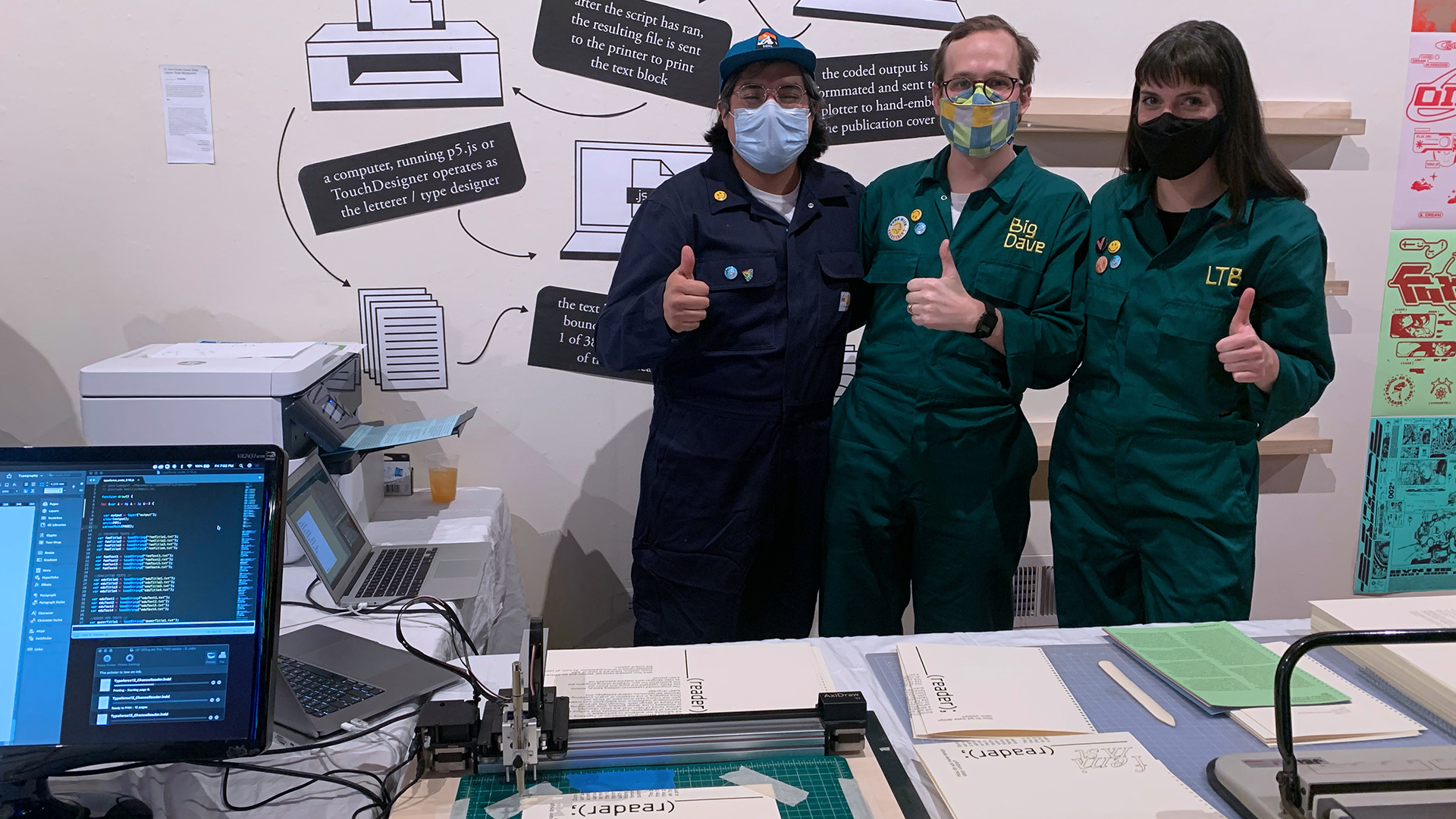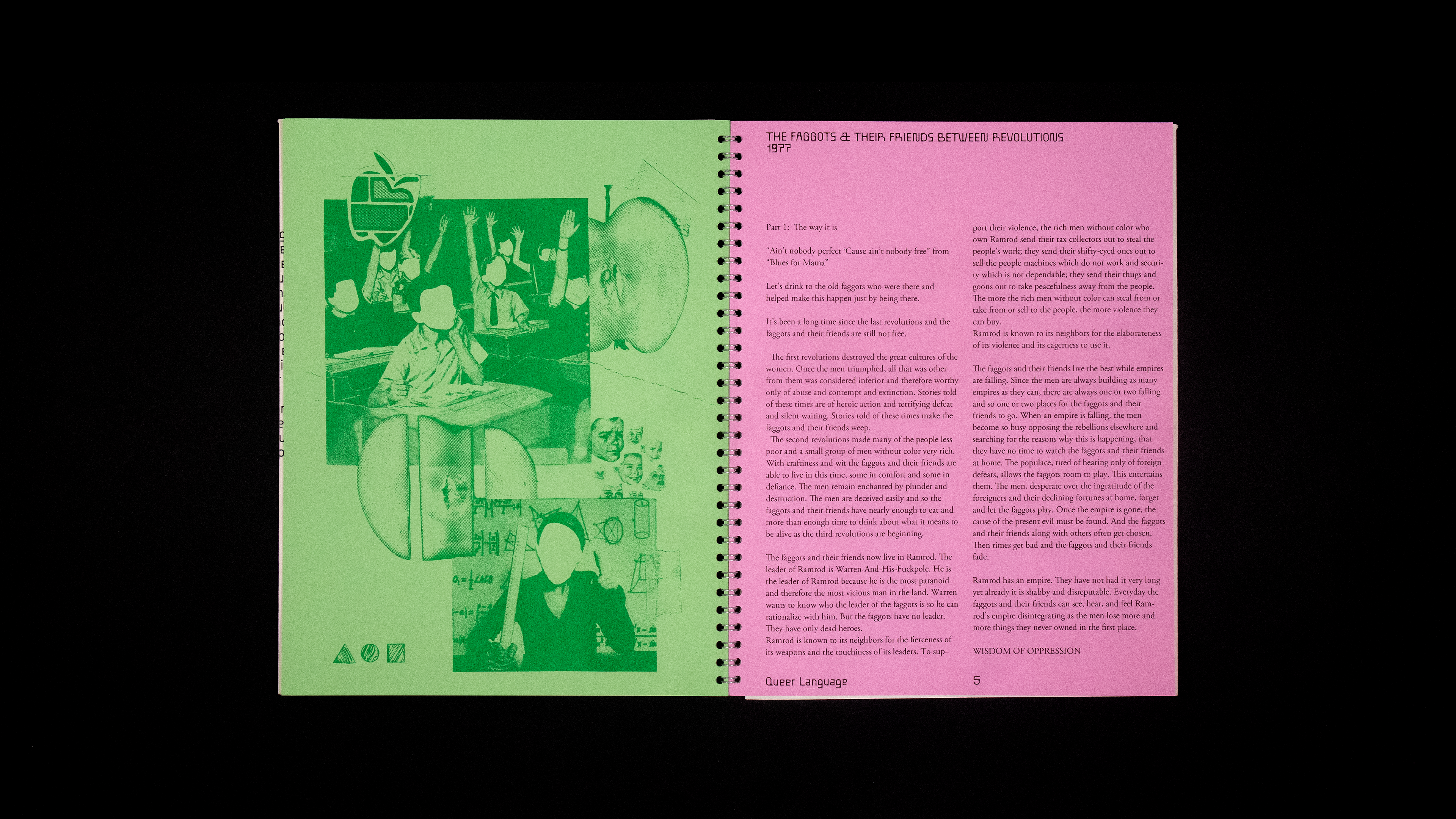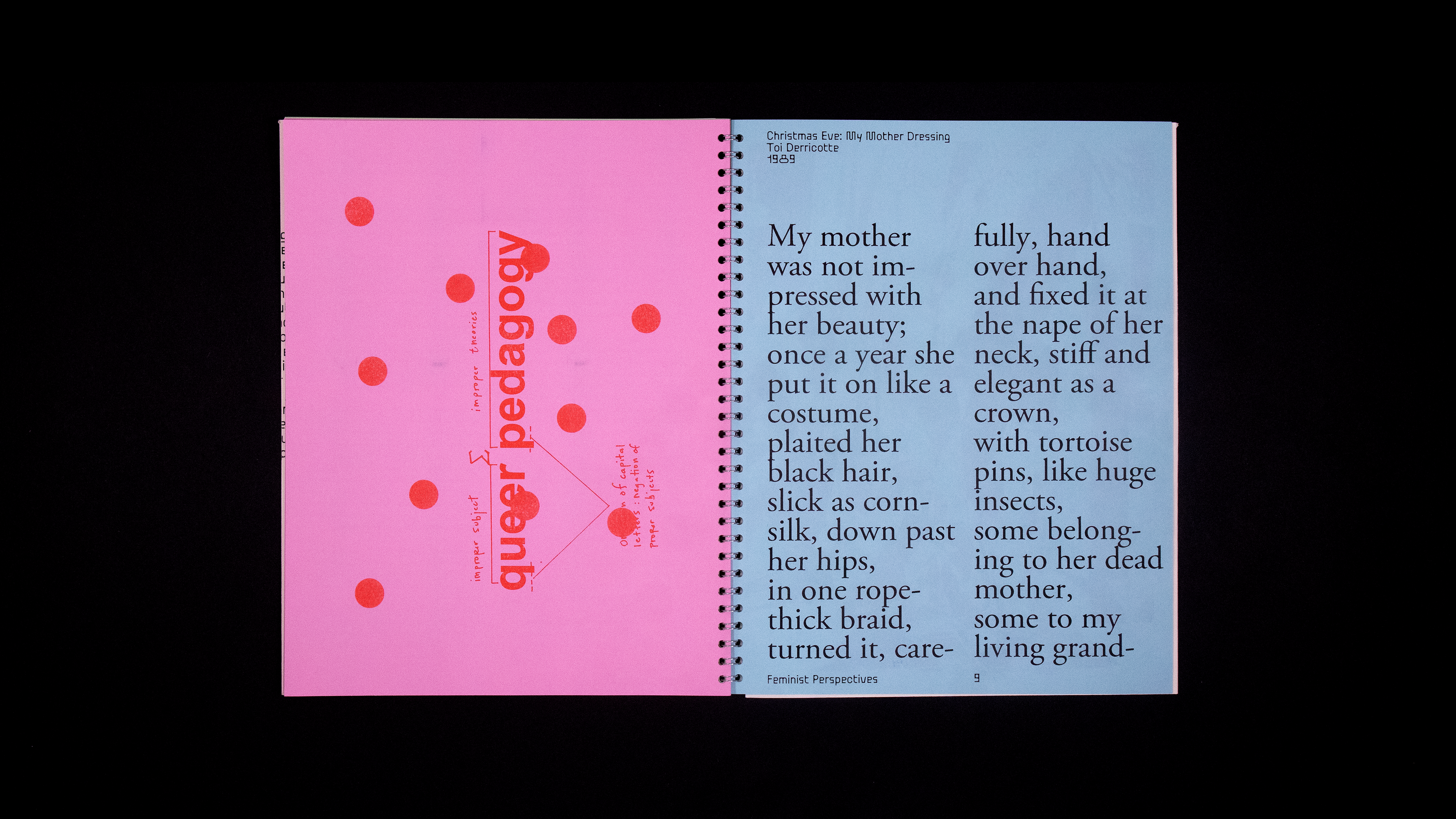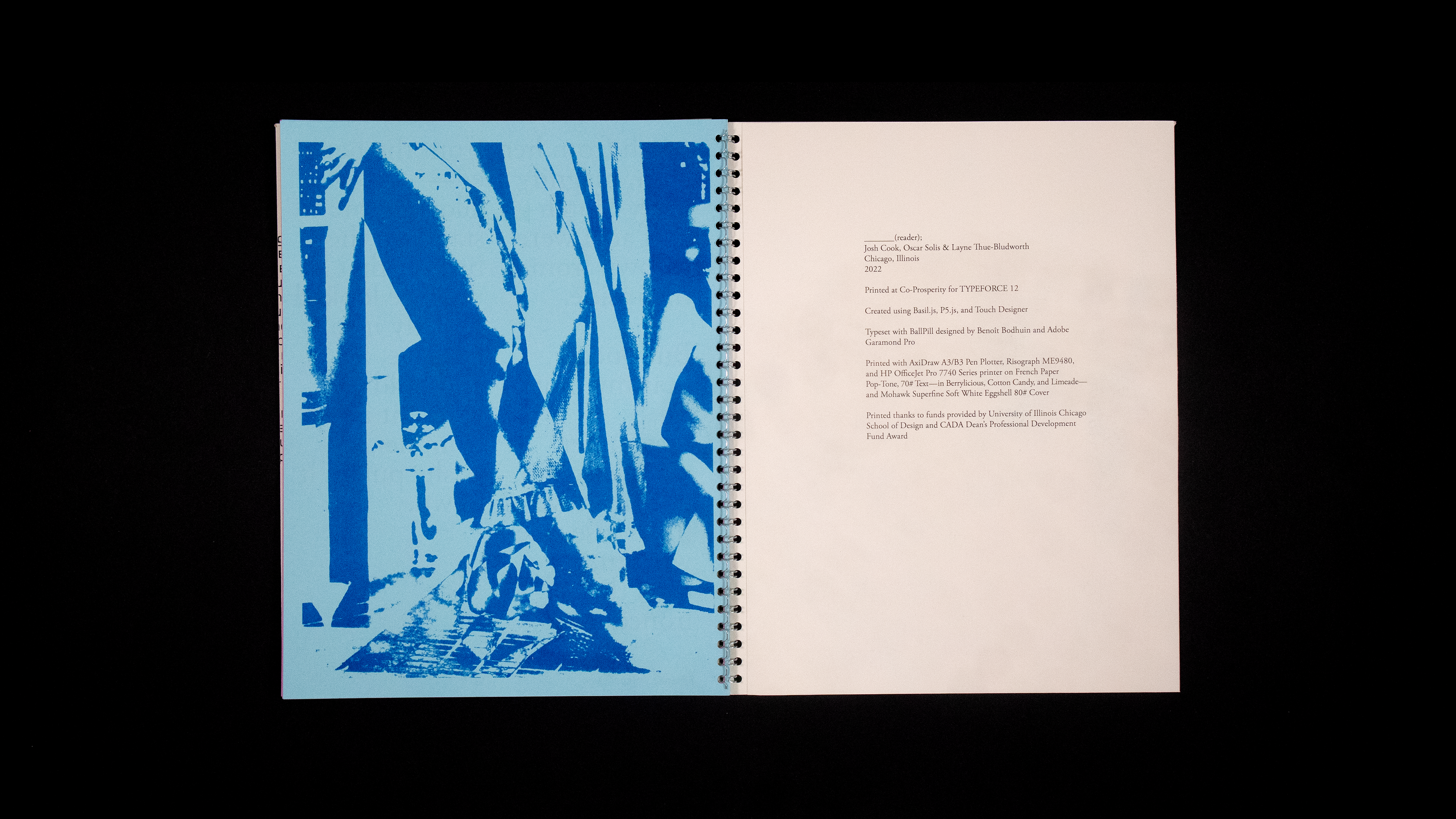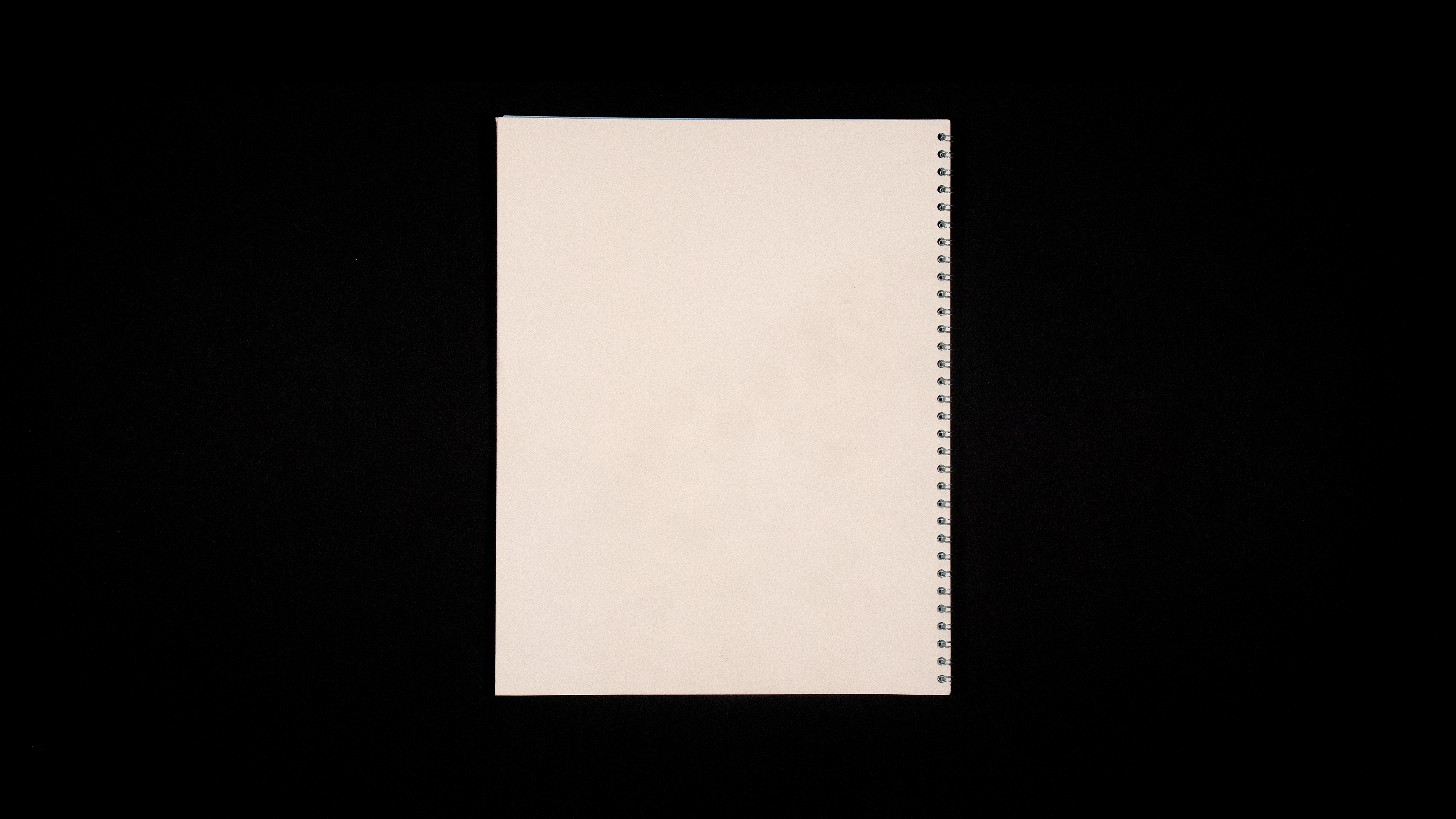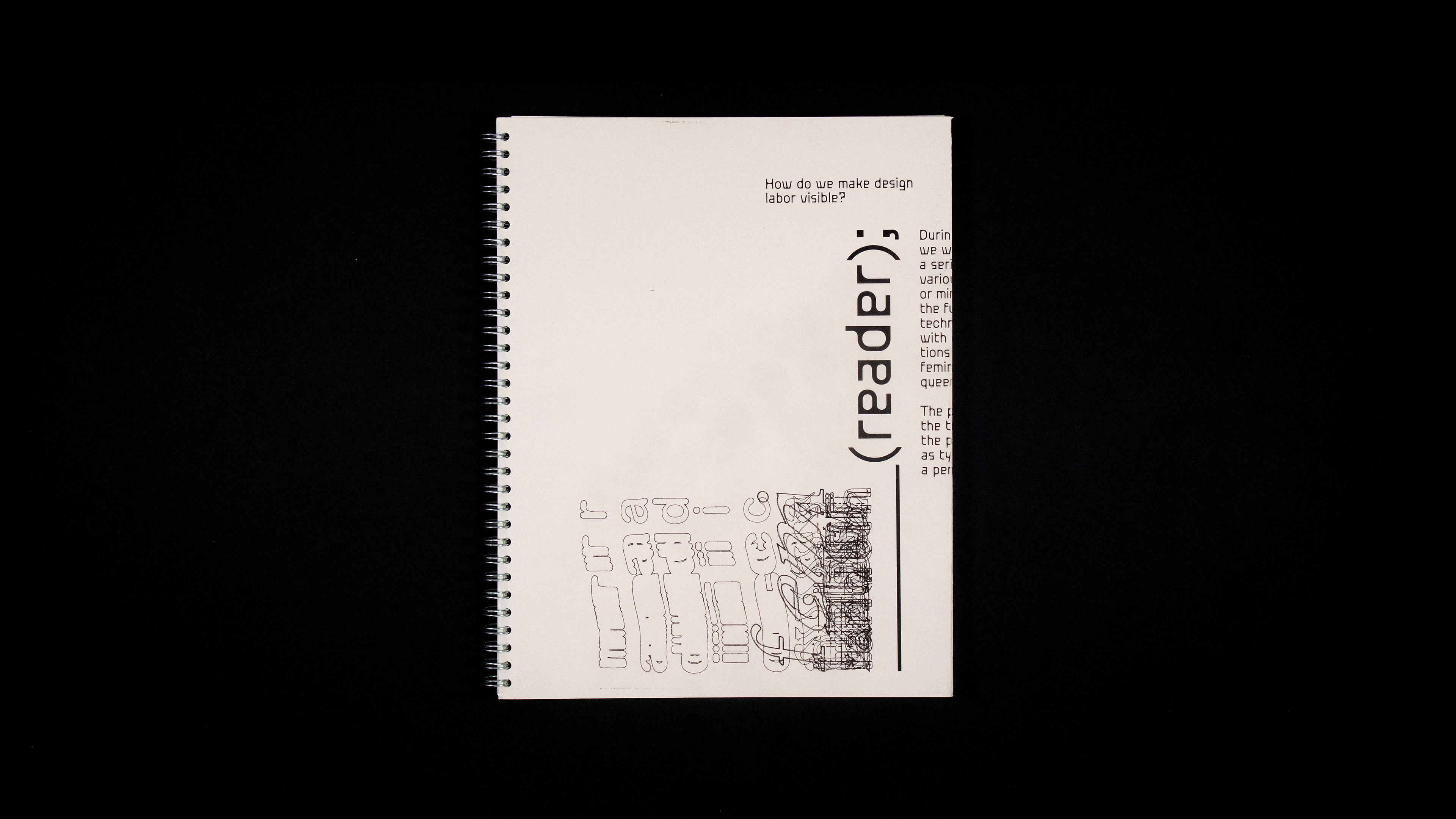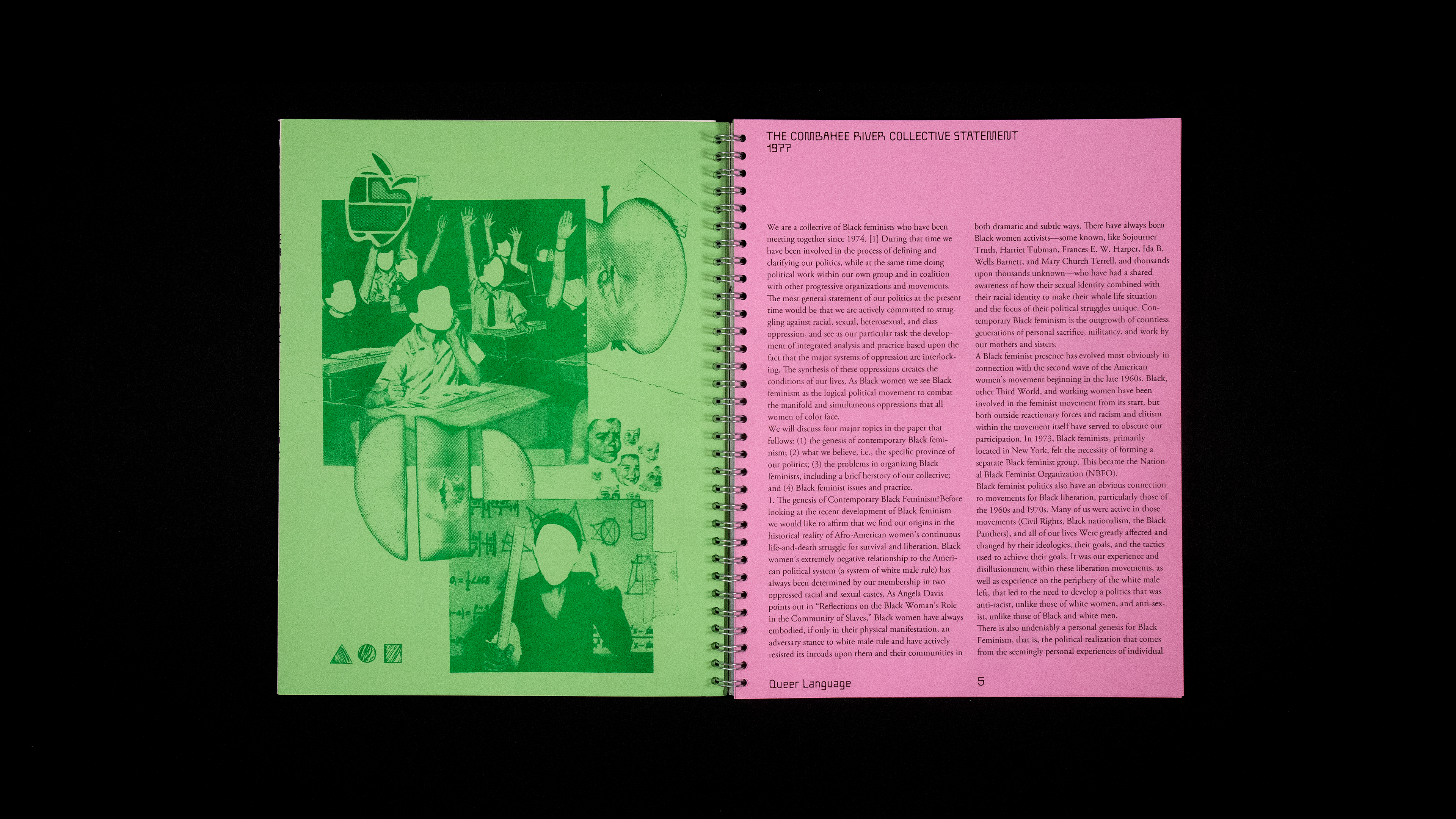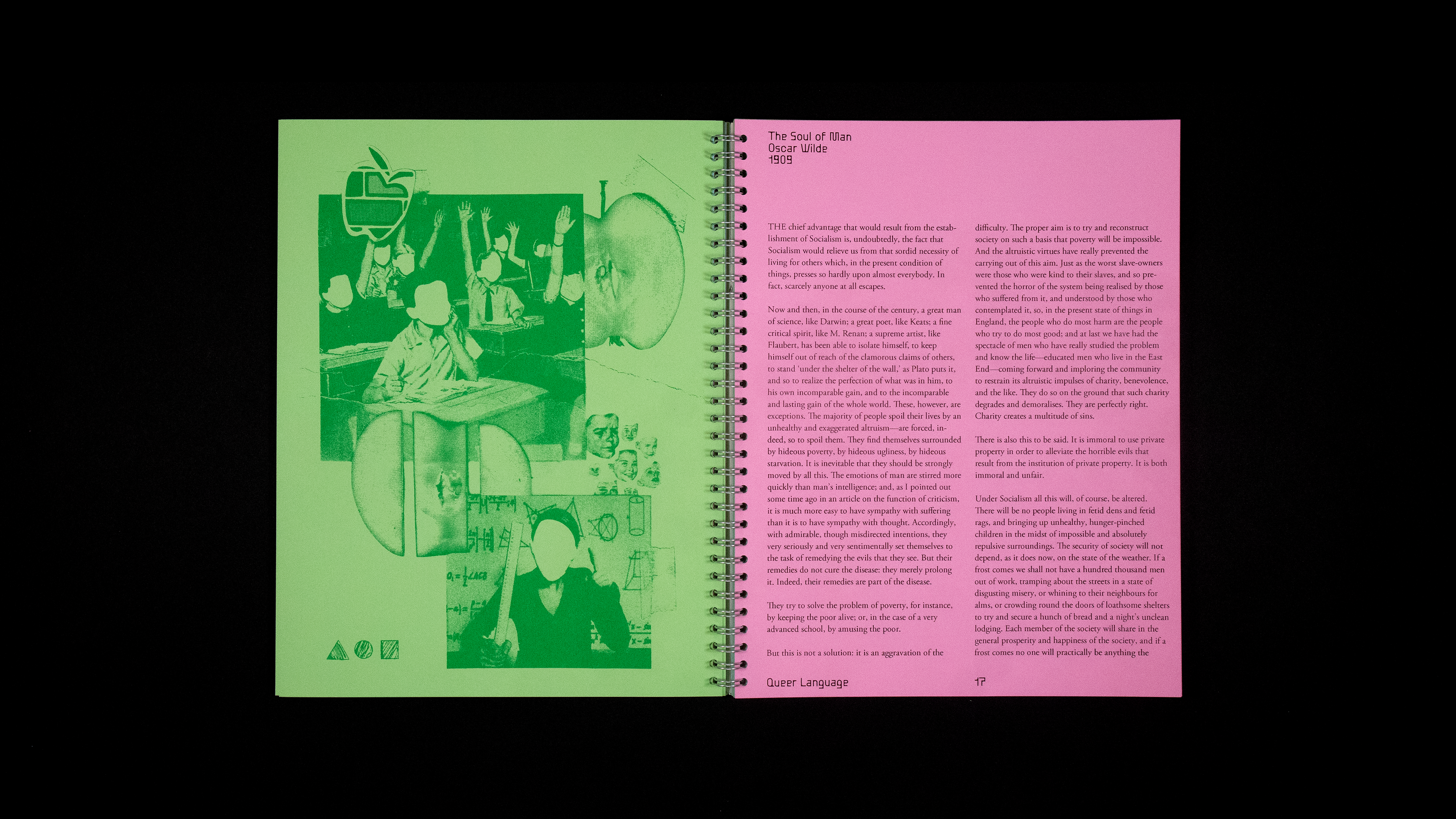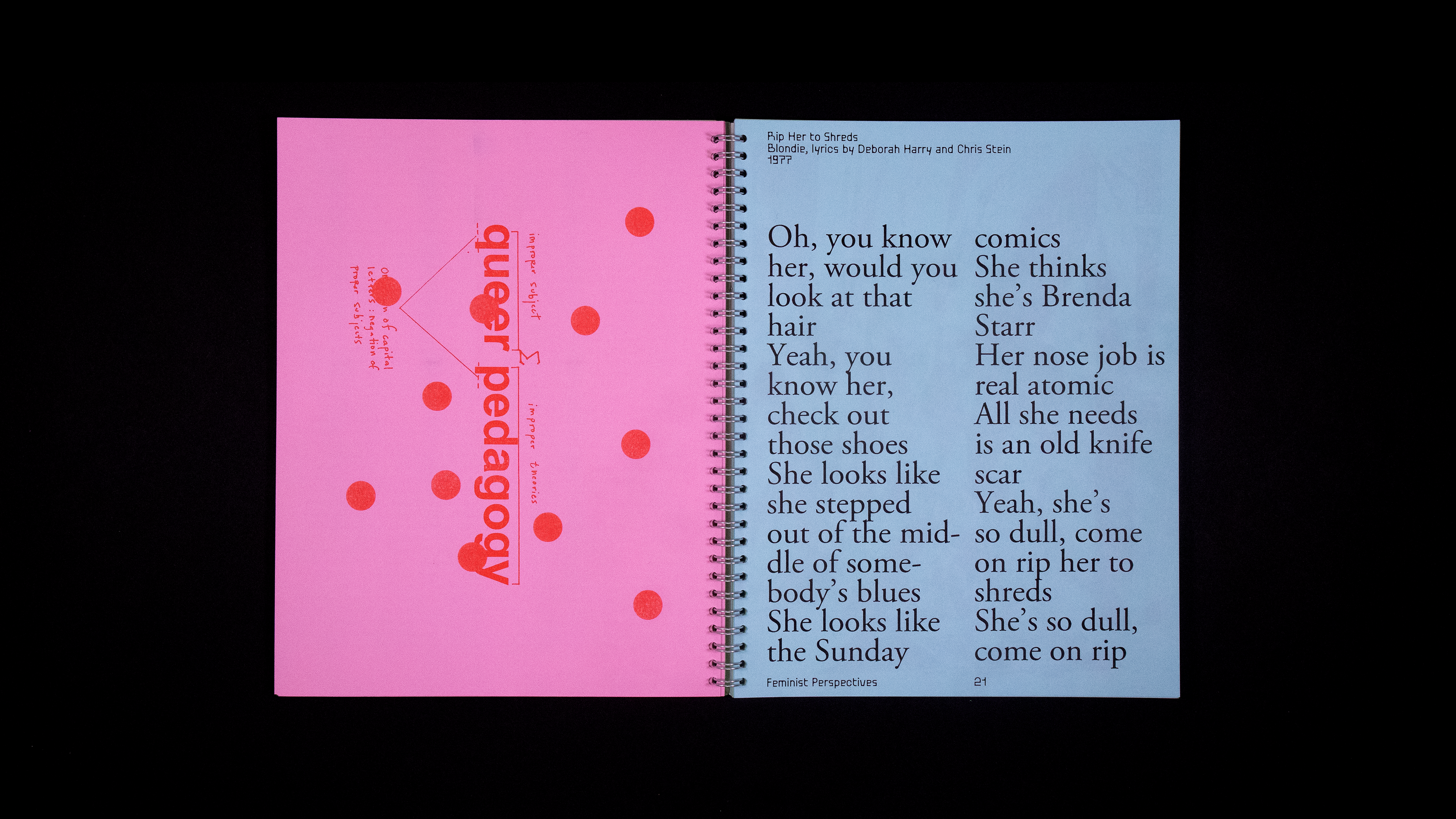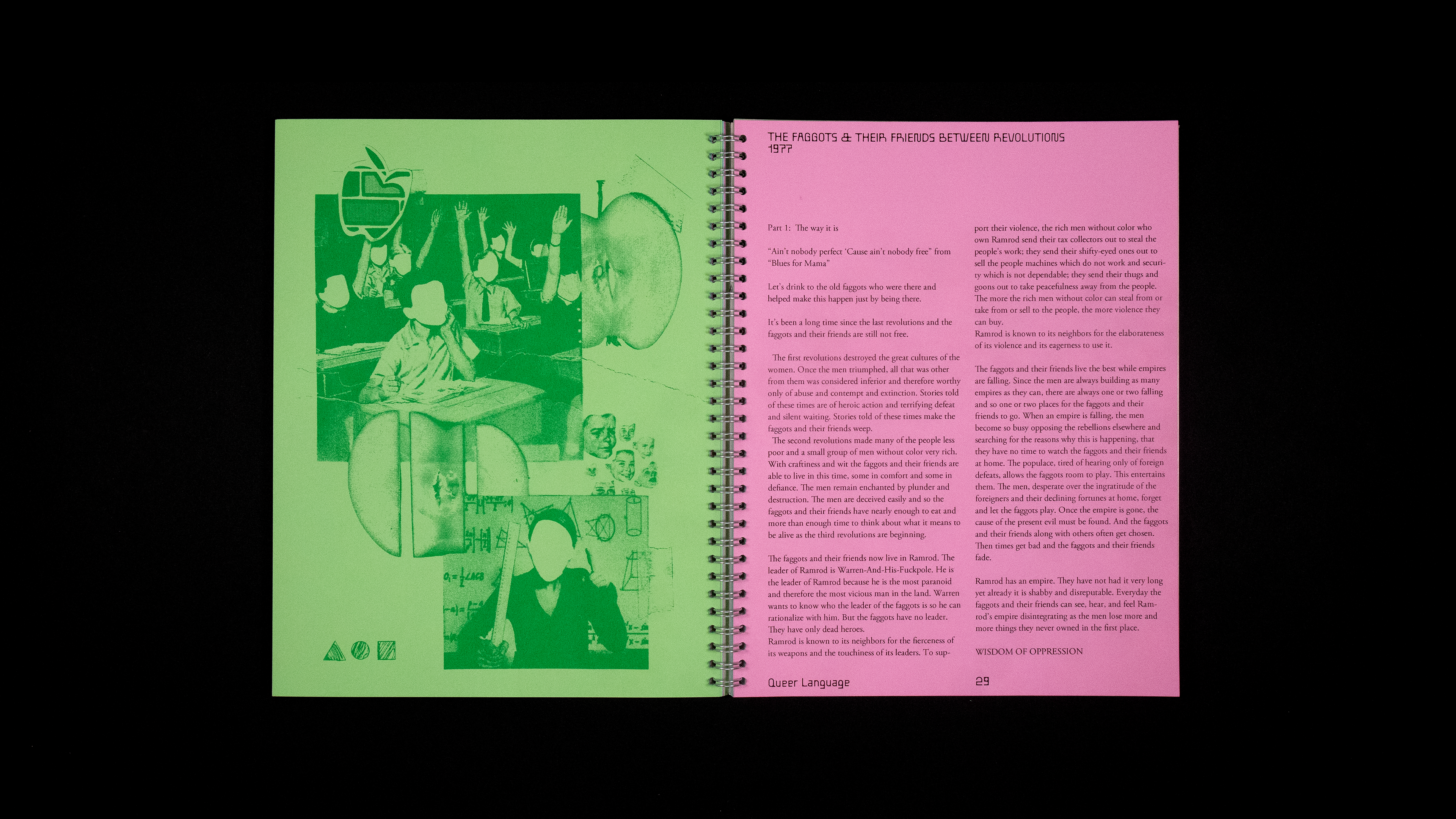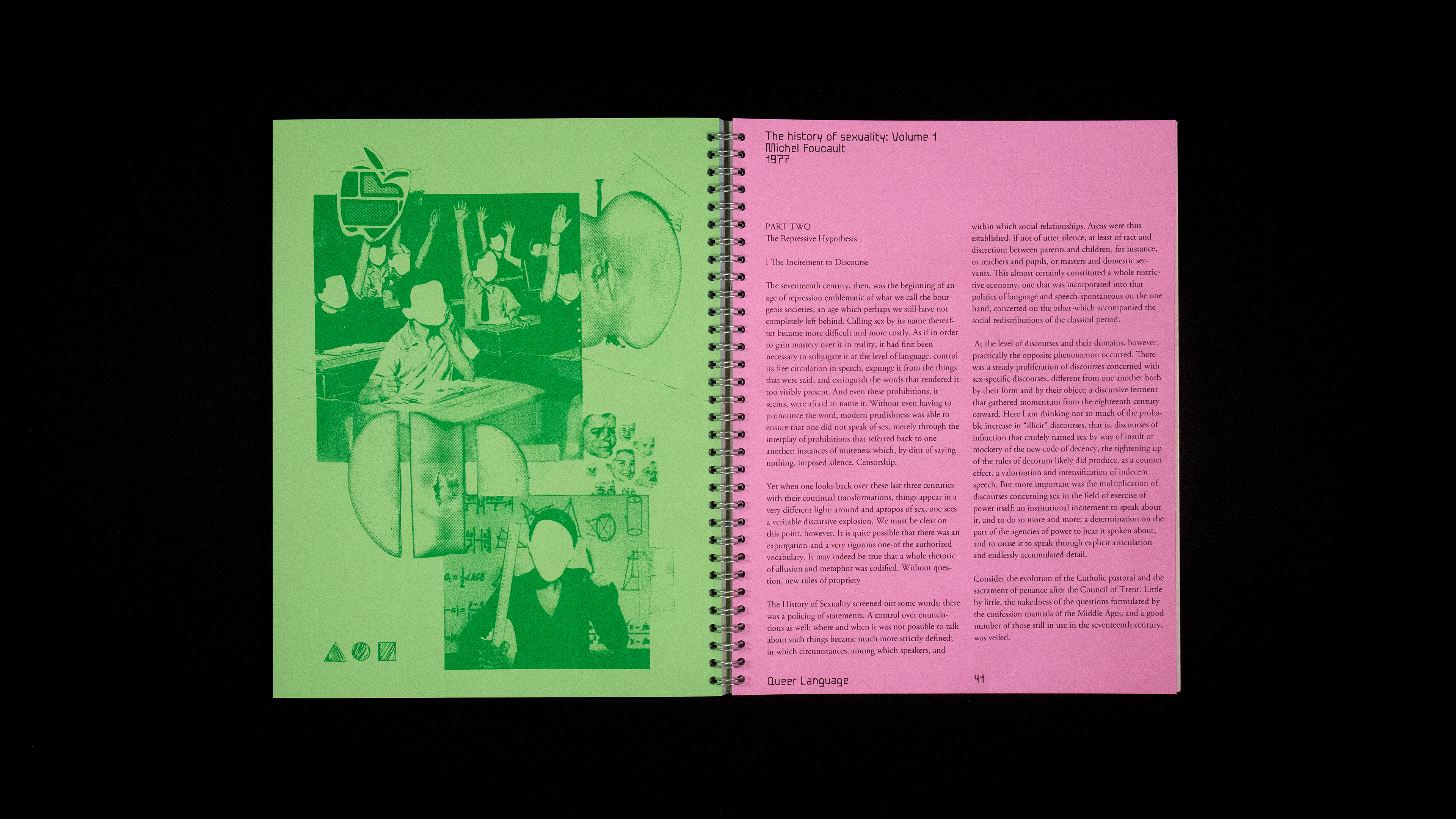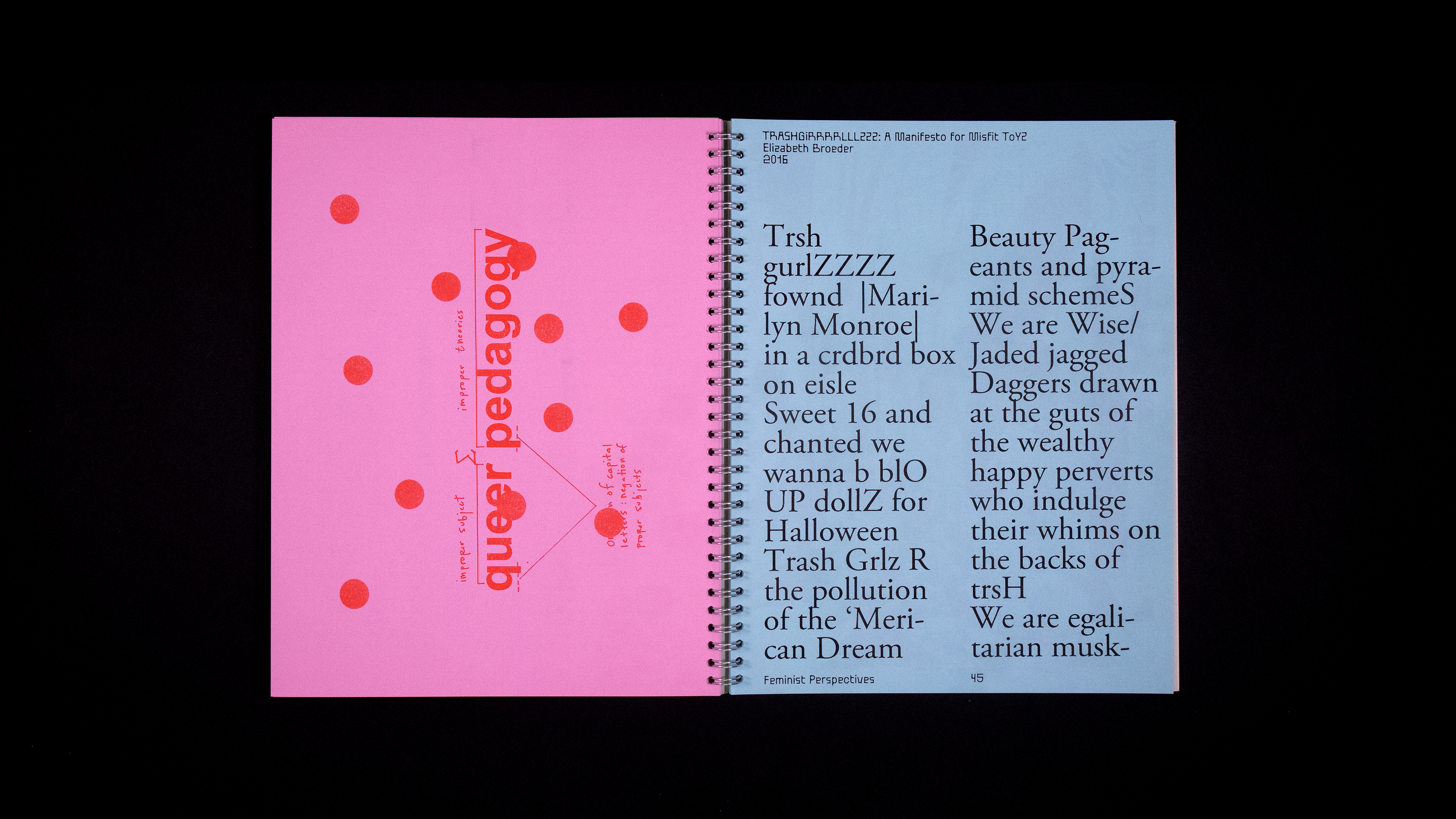Reader
Generative Publication & Performance, 2022
with Oscar Solis & Layne Thue-Bludworth.
Printed and bound live at Typeforce 12, this publication and accompanying performance seek to surface design labor while simultaneously questioning what that means in relation to our tools. We worked with familiar design tools like the printer, bone folder, and wire binder as well as others that begin to blur the line between tool and collaborator (basil.js, p5.js, and Touch Designer). Additionally, engaging in the tradition of urgent publishing, we selected a series of critical texts that, when placed together in a reader, seek to inspire new lines of inquiry related to pedagogy, feminist perspectives, and queer language.
The production process would begin when a Typeforce attendee would hit the “control” and “E” keys on the provided keyboard. From there the computer would function as editor by selecting one text from the three previously mentioned categories, and then typesetter by laying out the selected content before sending it to the printer and resetting itself. While the text block was printing on previously Riso printed and collated paper, the attendee would then step down the production line where they would randomly select a cover design that would be pen plotted for them as they waited. These plotted embellishments were produced using p5.js and Touch Designer wherein the computer functioned as a pseudo type designer. Finally the attendee would move to the last stage of the production line where their cover, text block, and back cover would be bound to complete their individual publication.
While we do not have a count on the total number of books in the edition (we forgot to include a counter in the script), there were around 200 readers produced over the course of the Typeforce Installation. With four possible texts per category and six different cover options, there are a total of 384 possible versions of the publication, as such it could be said that all copies of the publications printed ended up being unique objects.
In addition to the readers produced live, three master copies were produced that contained a copy of every text and all six of the possible cover embellishments.
Printed thanks to funds provided by University of Illinois Chicago School of Design and CADA Deans Professional Development Fund Award.
Generative Publication & Performance, 2022
with Oscar Solis & Layne Thue-Bludworth.
Printed and bound live at Typeforce 12, this publication and accompanying performance seek to surface design labor while simultaneously questioning what that means in relation to our tools. We worked with familiar design tools like the printer, bone folder, and wire binder as well as others that begin to blur the line between tool and collaborator (basil.js, p5.js, and Touch Designer). Additionally, engaging in the tradition of urgent publishing, we selected a series of critical texts that, when placed together in a reader, seek to inspire new lines of inquiry related to pedagogy, feminist perspectives, and queer language.
The production process would begin when a Typeforce attendee would hit the “control” and “E” keys on the provided keyboard. From there the computer would function as editor by selecting one text from the three previously mentioned categories, and then typesetter by laying out the selected content before sending it to the printer and resetting itself. While the text block was printing on previously Riso printed and collated paper, the attendee would then step down the production line where they would randomly select a cover design that would be pen plotted for them as they waited. These plotted embellishments were produced using p5.js and Touch Designer wherein the computer functioned as a pseudo type designer. Finally the attendee would move to the last stage of the production line where their cover, text block, and back cover would be bound to complete their individual publication.
While we do not have a count on the total number of books in the edition (we forgot to include a counter in the script), there were around 200 readers produced over the course of the Typeforce Installation. With four possible texts per category and six different cover options, there are a total of 384 possible versions of the publication, as such it could be said that all copies of the publications printed ended up being unique objects.
In addition to the readers produced live, three master copies were produced that contained a copy of every text and all six of the possible cover embellishments.
Printed thanks to funds provided by University of Illinois Chicago School of Design and CADA Deans Professional Development Fund Award.

